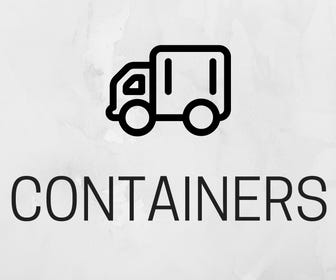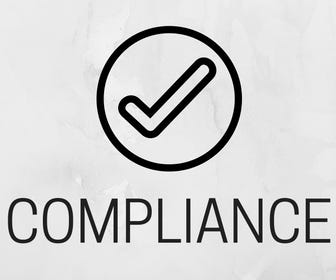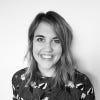Here’s What the Experts Say about Cloud in 2017Here’s What the Experts Say about Cloud in 2017
Talkin’ Cloud asked experts across cloud, security, web hosting and more to offer their predictions for what the future holds. Here are the trends they are keeping an eye on in 2017 and beyond.

Experts across cloud, security, web hosting and more offer their predictions for what the future holds. Here are the trends in containers, security, compliance and cloud they are keeping an eye on in 2017 and beyond.
 CONTAINERS
CONTAINERS

“Container adoption will move from early adopters to early majority. This shift will be marked by an increase in software vendors adding container capabilities to their existing products and introducing new products. We will also see new solutions that improve manageability of containers at scale. For example, this year we saw Docker get serious about enabling customers to run containers in production. The launch of Docker Datacenter, with manageability and security features moved the needle a long way. For many though, Kubernetes is the choice for container orchestration. One start-up aiming to simplify the adoption of Kubernetes is Heptio, founded by the guys from Google who kick started the project, came out of stealth mode late this year. The container snowball of innovation is overwhelming many of the tools that have traditionally been associated with DevOps. Generally, we are past the unreasonable hype phase of DevOps and now starting to look at real results. What we see is that DevOps is difficult even wrenching to put into place, but the benefits are so compelling there really is no choice for most organizations. How can they not do something that makes them faster and more stable at the same time?” – Dan Jones, director of product management, Skytap
“OpenStack and containers will move beyond proof of concept to deploying solutions that solve real-world business problems, providing a comprehensive strategy that allows enterprises and operators to bring new services that are secure, efficient, elastic, and scalable.” – Anand Krishnan, EVP and GM of cloud at Canonical, the company behind Ubuntu
“Technology comes in waves. When containers exploded a couple years ago, it was all containers, all the time. But containers only serve to make applications easier to build, ship and run to borrow a phrase. People will think more about applications overall in 2017, rather than just the components that make them up.” – Serge Pashenkov, CTO, Cluster HQ (which unexpectedly shut its doors on Dec. 22/16)
 COMPLIANCE
COMPLIANCE

“It used to be that security concerns were the biggest impediments to public cloud adoption. But, in 2017, that will no longer be the case. It is widely accepted that security in public clouds is strong, shifting the top concern to compliance. Organizations moving to the cloud need to be able to demonstrate and provide assurance that they are doing things in a secure and compliant manner. So, whether it is PCI, HIPAA, NIST-800 53 or internal compliance standards, organizations need to be able to demonstrate that they can maintain compliance throughout the fast-pace of change that takes place in the cloud. To solve this, they will have to turn to security and compliance automation solutions that will help them measure and report with ease.” – Tim Prendergast, CEO at Evident.io
“Laws protecting consumer privacy should serve as deterrence of cybersecurity negligence leading to data breaches, but so far regulatory bodies have earned a reputation for doling out slaps on the wrist. Data protection authorities, spearheaded by the EU’s new GDPR, are increasing their vigilance – along with the cost of fines. Major fines for HIPAA and EU privacy violations in late 2016 have set the tone for next year. Expect to see global companies scrambling to implement additional privacy controls to prepare for GDPR’s enforcement in 2018.” – Skyhigh Networks CEO Rajiv Gupta
 SECURITY
SECURITY

“Machine learning and industry collaboration will transform security: In the New Year, the “bad guys” will become increasingly sophisticated and the value of the attacks they are conducting— both monetarily and impact wise—will be more harmful than ever. To combat this, innovators are working to move from the old school anti-virus approach to a more transformative approach informed by machine learning. This approach learns what normal behavior within an IT infrastructure looks like and then calls out any abnormal behavior. Organizations are also moving away from working in siloes and are now developing security technologies that are working together to aggregate information, so users can monitor and address all vulnerabilities.” – NaviSite CTO, David Grimes
“ISPs will find themselves at an important crossroads next year. By working together with governments and the international community, ISPs can strengthen the underpinning infrastructure of the Internet and significantly reduce the volume of malicious traffic flowing across their networks. These methods aren’t a quick fix, and they certainly can’t protect against the full spectrum of DDoS attacks, but they would be a vital first step in speeding up our global response to attacks. I’m hopeful that the future of volumetric DDoS attacks in two or three years’ time will be significantly reduced by the combined efforts of ISPs, device manufacturers, security vendors and even government entities. As this community rallies together to better protect the integrity of the Internet we may see ourselves in a very different place down the line.” – Dave Larson, CTO, Corero
“DDoS attacks like the one perpetrated against Dyn will force many providers to look to start outsourcing security rather than going in-house due to lack of top talent.” – Chris Crosby, CEO of Compass Datacenters
 Public Cloud, Private Cloud and Hybrid Cloud
Public Cloud, Private Cloud and Hybrid Cloud

“Over the last few years we’ve seen previous predictions around increased public cloud adoption come to fruition, and we predict 2017 will be the year hybrid cloud asserts itself as the dominant cloud environment. Cloud spending will continue to be on the incline, and we believe a majority of that spend will go toward hybrid cloud infrastructures; this is proving to be the sweet spot for the enterprise. Organizations that have spent a lot of time and resources on their own data center are not likely to do away with it all overnight. Adopting a hybrid cloud environment allows for a transition to cloud in a way in which feels most comfortable; a gradual approach that can provide both immense cost savings as well as recovery benefits. Hybrid cloud allows for a variety of recovery options should the need arise, on-premises, public cloud or a little of both, which help companies be better prepared for a variety of disaster scenarios. Additionally, the perceived complication and expense of transitioning to cloud, that has previously held many IT organizations back, is now starting to whither. More and more companies are realizing that adopting a hybrid cloud approach, with the right partners in place, can actually be quite simple and affordable.” – Paul Zeiter, President, Zerto
“2016 saw an increase in the adoption of cloud services, but now users are going to raise expectations. More and more organizations are noticing that you either go completely to the cloud or you stay on premises since it’s just not an ideal situation to use a hybrid ‘half-and-half’ approach. Amazon and Azure make it seem easy to migrate, but businesses are realizing that even though they have a cloud environment, they have to manage it and update it continuously. In 2017, they will begin to wonder if they’re getting what they need in terms of performance and security. The cloud will not solve all of their problems and IT departments will need to have an exit strategy to avoid vendor lock-in. The end goal should not be getting all of the desktops in the cloud, but to be able to access data from anywhere.” – Mark Plettenberg, Product Manager, Login VSI
“In 2017, cloud will continue to drive radical change across enterprise IT. Businesses will make even greater investments outside of their own data centers, particularly in ‘as-a-service’ computing. 2017 will be the last year we spend money in our own data center as we move applications to the public cloud. The cloud will also bring about significant change in the role of IT professionals – IT leaders with more general experience will create teams of people with specialized knowledge of key elements of IT infrastructure, such as storage and security.” – Ruben Spruijt, CTO of Atlantis Computing
“We have all witnessed the ‘cloud rush’ of recent years where organizations have been encouraged to move their workloads to the cloud. However, there is a growing recognition among organizations that cloud services are not the be-all and end-all – and certainly not always the most cost effective way to deliver all their IT workloads. In several cases, the promised cost savings that customers thought they would receive haven’t materialized – in fact it can be quite the opposite when they first see their bill, after failing to be properly advised on their long-term costs. Many IT service providers have been caught up in the vendor hype surrounding cloud services, and encouraged cloud migration despite the end user often not fully understanding the long-term cost implications. Next year we will see more businesses move workloads out of the cloud and back on-premise, and in the future, we will see a more educated, sensible approach where cloud isn’t the default option for hosting all workloads.” – Karl Roe, VP Services and Cloud Solutions, Nuvias Group
“I do think that we are coming out of the love affair with cloud. I think it’s really moving into a different sort of paradigm from just ‘everything gets hosted.’ I think companies are starting to go into that mode of almost like we saw, I want to say, 15 years ago where they would outsource everything and then bring it back in house. I think companies are starting to feel the same way–like they don’t have control of their own destinies and that really more of their brand, their brand equity and how they expand their global go-to-market strategies is different. So now they’re looking for what we’re seeing as ‘services partners’ to help them in more of a vertical play, less than a commodity around cloud.” – Kim King, vice president of Global Partners and Channels for Progress Software (via The VAR Guy)
“Today, multi-cloud is a full-fledged reality, as organizations seek to match each workload to the cloud platform where it will achieve the best performance and cost-efficiency. Many enterprises today find themselves managing multiple clouds inadvertently and sometime haphazardly, because teams across the business are independently choosing different cloud platforms and providers to best suit their individual needs. I predict that next year we’ll see more companies formulate explicit multi-cloud strategies to best leverage and coordinate multiple cloud providers. However one gets there, a multi-cloud world comes with a unique set of challenges, including the need for expertise across a larger range of cloud technologies. It also requires managing multiple vendor relationships and more complicated cost tracking. One of the most critical needs is multi-cloud security — and my predictions for the near term are a mixed bag.” – John Engates, CTO, Rackspace
About the Author
You May Also Like


